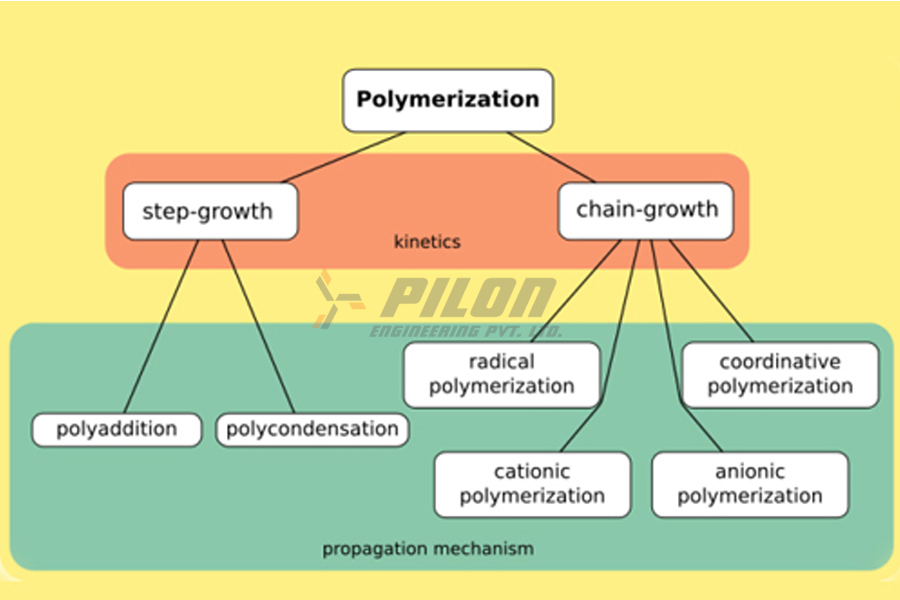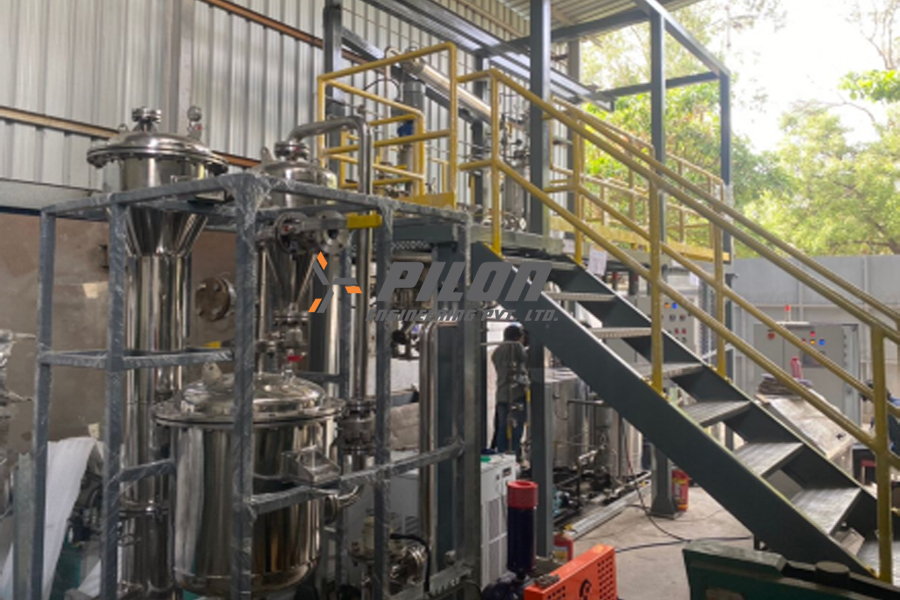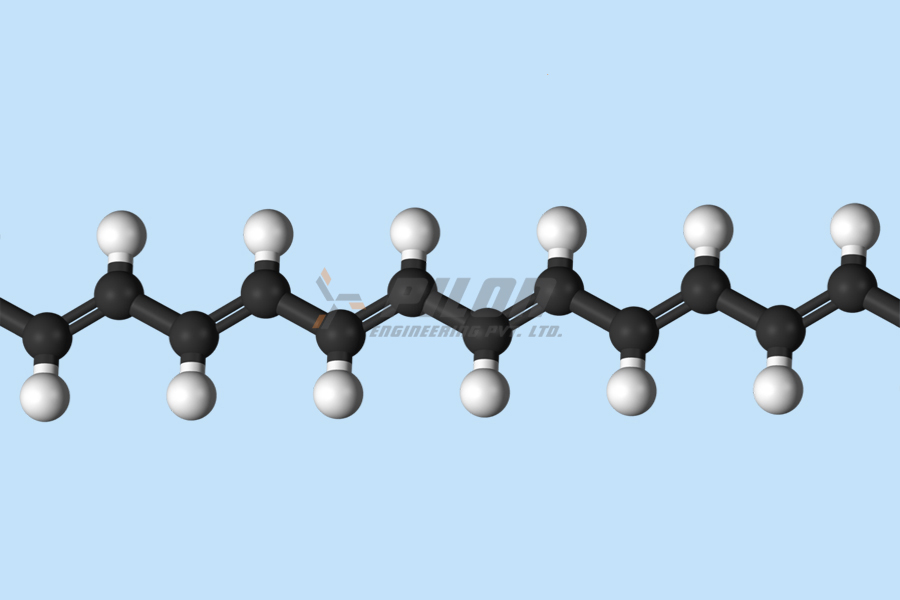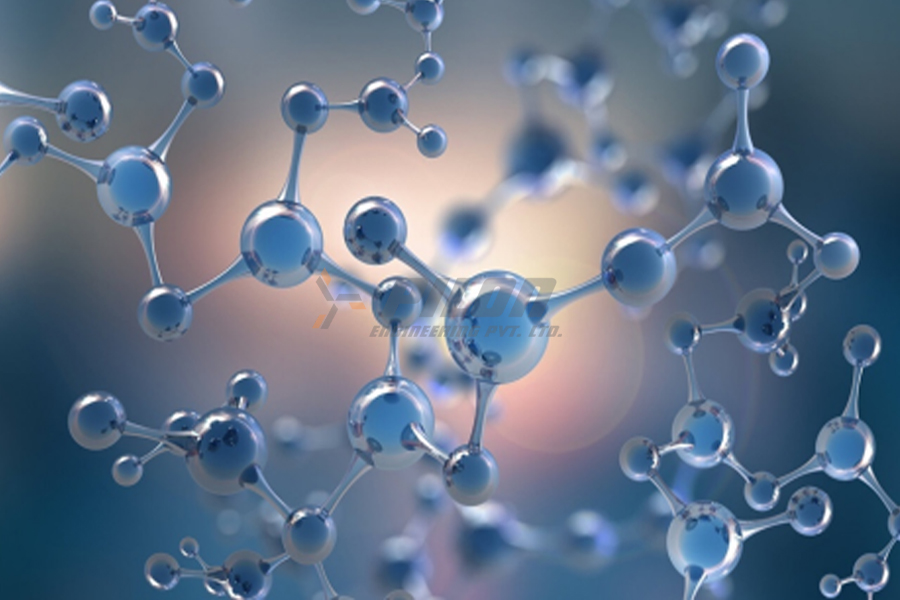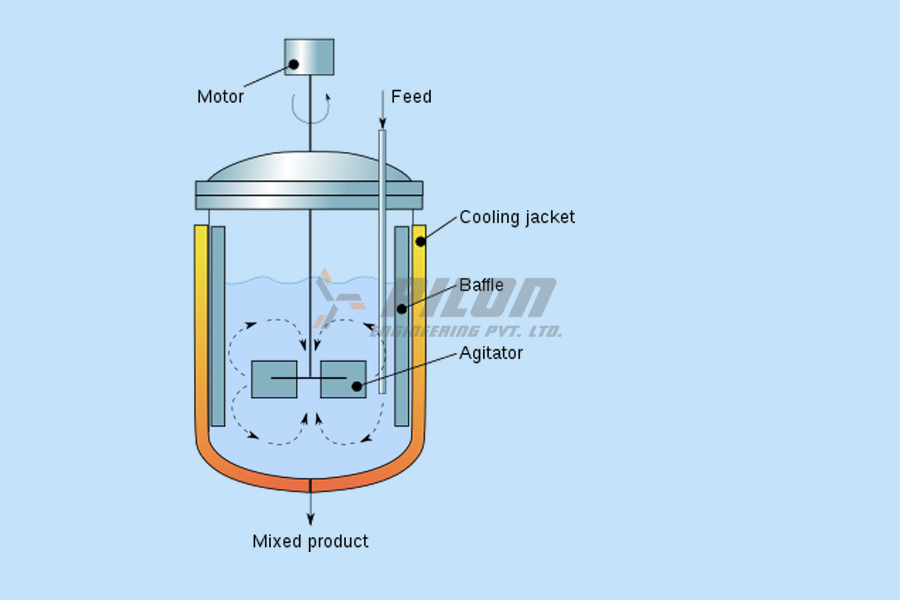Project – Polymerization Reactor System
Designed for development of Styrene Polymer
About Polymerization Reactor System…
- A polymer is a large molecule made up of repeating subunits derived from molecules of low relative molecular mass, called monomers. Polymers, both natural (e.g. DNA, silk, cellulose) and synthetic (e.g rubber, epoxy resin, polystyrene), play an important role in everyday life due to their range of properties.
- Polymers tend to be viscous, which often imposes lower limits on their concentrations in diluents and on reaction temperatures. At very low temperatures, or in the absence of a solvent, the viscosity of a reacting mixture might be so high that it severely limits heat transfer. Worse yet, the polymer might crystallize and coat the catalyst- and monomer-injection systems.
- The molecular architecture of a polymer can be influenced by chemistry, reactor configuration, and process conditions, all of which must be well understood for reactor selection and design. Without that understanding, an attempt to improve throughput, for example, by raising reactor temperature, might lead to unexpected results in the customer’s application
- Viscosity, like melt strength, is an end-use property — the kind of property that producers and their customers use to measure product performance. Underlying these properties sits another layer of properties that relate to molecular architecture and include molecular weight, polydispersity index, and degree of branching.
- Pilon plays a vital role in engineering of the polymerization reaction reactors; supporting accessories to achieve desired results and complete system. Taking care of entire project End to end, from concept to execution.
Overview of the project
- This project was designed for development of Styrene polymer and later through the Extruder and Palletizer units the palletization of polymer was achieved.
- Complete system is fully automated through PLC-SCADA computerised system


